#chunhyang
Explore tagged Tumblr posts
Text
Shopkeeper: I can only wish that Amhaeng-eosa would come to town as quickly as they can. Chunhyang: Huh? Those are weird clothes! Fai: Ah ha ha ha ha ha! She called them weird! Must’ve been talking about your clothes, Kuro-rin! Mokona: Kurogane’s weird! Kurogane: If I’m weird, then so are you!
#KuroFai#Kurogane#Fai#Mokona#Chunhyang#Nokoru#Suou#Akira#Tsubasa Chronicle#Tsubasa Reservoir Chronicle#Quote#Amhaeng-eosa#Chunhyang and Fai#Chunhyang and Kurogane#Kurogane and Mokona#Goryeo#Fai and Mokona
5 notes
·
View notes
Photo

#qué cara de vago por dios#parezco mi abuela#cho seung woo#chunhyang#por ser finde largo saqué la artillería pesada#csw rewatch
4 notes
·
View notes
Text


.⚫️⚪️.
22 notes
·
View notes
Text
The Great CLAMP Re-Read Part 8: Legend of Chunhyang
Part 1 (RG Veda) | Part 2 (Man of Many Faces) | Part 3 (Tokyo Babylon) | Part 4 (Duklyon) | Part 5 (Clamp Detectives)| Part 6 (Shirahime)| Part 7 (X)| Part 9 (Miyuki-chan)| Part 10 (Rayearth)| Part 11 (The One I Love)
The RG Veda historical epic that never was, or better off cancelled? While X is widely cited as CLAMP's first unfinished work, there is actually another 1992 stillborn CLAMP work, before we can finally move onto 1993 in the CLAMP timeline. To be a broken record, I had no idea this existed! It’s unsurprising: only 3 chapters were ever published (plus 1 drama CD), before the magazine folded and CLAMP decided to cancel the project (yeah yeah they said they’d love to finish it. They’re liars).
Unlike many of their other discontinued early works, this one actually got a tankoban release, and Tokyopop did the now out-of-print English translation in a single volume with no extra art. Plus, I was hesitant about approaching a work of Korean folklore written by 4 Japanese women, given the history, and my fears were not unfounded. So I’m content that I put off getting the physical release for my collection. Spoilers (?) ahead.
Synopsis: In Ancient Korea, a brave young maiden called Chunhyang, opposes the injustices of the corrupt governing Yangbans. When her mother, a magic-wielding mudang, is kidnapped by their town's Yangban, Chunhyang is aided by the lecherous Mongryong, the Amhaeng’eosa, a secret government agent. Together, the two set off on adventure that will take them across Korea to liberate towns and discover the truth of Chunhyang's father.
The Story: I wrote all of that out, but the reality is what actually exists of Legend of Chunhyang is two chapters and a flashback. It's very hard to judge a story that hasn't settled in or moved further than the set up for the adventure. What we got is entertaining enough - chapter 1 is the inciting incident where Chunhyang’s mother dies and she teams up with Mongryong, 2 has them liberate a mystical flower village with the help of a rain god and twin mudang, and 3 is a flashback that reveals Chunhyang’s dead father was important and killed for defying the Yangban. It’s very Robin Hood, and moves at a good pace despite being pretty standard YA fantasy. Speaking of, I don’t think CLAMP realises most Korean towns back then would have been agricultural. Why does Chunhyang live in a huge villa doing nothing all day? I want my peasant hero, not a disgruntled pseudo noble.
The skeleton for the entire story is pretty obvious (bring revolution to Korea) and I’d definitely be curious to see more of it. But I’m also not sad we got nothing more. It’s a pleasant afternoon distraction.
The Themes: Don’t be a bully and tyrannical governments are bad and must be resisted - as long as they’re Korean (side-eyes that Rising Sun flag in CLAMP Campus Detectives. Ah, Japanese nationalism). It’s 3 chapters, that’s all I can glean.
The Characters: Chunhyang fits heavily into the CLAMP stock heroine: young, spunky, strong, pure-hearted, and athletic, shojo ingenue. Still, while she’s nothing new, I enjoyed Chunhyang. CLAMP has the formula for the fun, palatable heroine we love to see win, and I’m hardly immune. Mongryong was more bland to me, falling hard into that 90s era shojo hero who gets comically beaten up by his love interest, but always suavely swoops in to save her. It’s nostalgic, he’s hot, but that’s it. Maybe with time they would have defined themselves like RG Veda’s cast did (also archetypes), but there’s just so little!
The crumbs of minor characters are equally stock - one dimensional cackling villains, and pure beyond belief good guys. Mongryong’s tiger spirit was my favourite because I love all cats. It’s really the charm of Chunhyang that carries us above - she’s a good balance of fierce and endearing.
The Art: Legend of Chunhyang is interesting in that chapter 1 was brush inked due to their experience on Shirahime, but the remaining art was done with marker pen. The result is chapter 1 feels a bit unpolished, with backgrounds being mostly chunky blobs and quick lines in a way I found distracting. 2 and 3 work much better, with thick swirls of soft magic and flowers, giving Chunhyang a slight distinction from their other early 90s work. The panel work is quite conservative unlike RG Veda, very rarely having dynamic spreads, but satisfactory and readable. Chapter 2 is a standout of circling dragons and flowers. Everyone is gorgeously dressed and pretty. It’s not the best of CLAMP, but it’s nice and elevates the material.
Questionable Elements: While certain CLAMP podcasts have praised CLAMP for essentially rewriting the folktale to make Chunhyang more active - why would you even choose to adapt that Korean folklore then, if your intention is to make a generic Robin Hood sword and fantasy series that has zero to do with the original culture? You could just set it in feudal Japan! It feels very distasteful to deliberately choose Korea as a setting of barbaric unending tyranny that needs correcting. Especially given Japan’s history in “modernising” Korea.
On top of that, there’s a clear lack of research done - a lot of the outfits and hair accessories are inaccurate. Chunhyang’s mother’s decision to kill herself than risk dishonour is also incredibly Japanese (and notably doesn’t exist in the original). I have to cry foul because if you’re going to actually set this in a real ancient Korea, you should do your research. I’m not saying CLAMP are anti-Korean but they show a disappointing lack of care and bias.
Also. How old is Mongryong if Chunhyang is 14. Answer quickly, CLAMP.
Overall: Listen, RG Veda 2.0 this is not. Rather than an imaginative, fantastical, sweeping epic, Legend of Chunhyang is built on very familiar tropes and stock characters with a dose of cultural insensitivity and bias. It doesn’t even have a proper narrative arc, existing more as a “what if” than an almost masterpiece. It’s alleviated by the sheer charm of Chunhyang herself, its brisk, entertaining pace, and the enjoyable art. But it’s no great literary tragedy that it was never finished, and I’d really only recommend it to diehard CLAMP fans who want a quick, pleasant escape on a fantasy adventure.
16 notes
·
View notes
Video
youtube
I'm a Barbie Girl [Stars Top Recipe at Fun Staurant : EP.214-3] | KBS W...
0 notes
Note
Seeing your glee over When the Phone rings and (way back) Flower of evil makes me wonder what your top 10 Kdramas are (or top 100, if that would make it easier XD )
I love this ask but it took me a while. I am sure I am forgetting some but (no order)
The Legend First King's Four Gods
Flower of Evil
Damo
The King Loves
Healer
City Hunter
City Hall
Come and Hug Me
The Red Sleeve
Jumong
My Country
Empress Ki
Robber
Gloria
Family Honor
Three Musketeers
My Dearest
Are You Human Too
Love Rain
Mask
Cruel City
Strong Girl Bong Soon
Goblin
Faith
The King 2 Hearts
Brilliant Legacy
Arang and the Magistrate
Hello My Teacher
Moon Lovers
Train
Padam Padam
The Rebel
It's OK That's Love
It's OK not to be OK
Gaksital
New Tales of the Gisaeng
I Miss You
Hometown Cha Cha Cha
While You Were Sleeping
Whisper
I Can Hear Your Voice
Save the Last Dance
Thank You
Can You Hear My Heart
A Gentleman's Dignity
Time Between Dog and Wolf
Secret Garden
Secret Love Affair
Live Up to Your Name
My Country
Chuno
Friend Our Legend
Capital Scandal
Spring Waltz
Sungkyunkwan Scandal
Delightful Girl Chunhyang
Kingdom of the Winds
A Love to Kill
Lovers
Last Scandal
IRIS
This Winter the Wind Blows
Something Happened in Bali
Beautiful Days
Worlds Within
Que Sera Sera
Snow Queen
Bad Guys
Haechi
The Crowned Clown
The Legend of the Blue Sea
The Princess' Man
Chicago Typerwriter
Tale of the Nine Tailed
Shut Up Flower Boy Band
My Beautiful Bride
Beyond Evil
When the Phone Rings
Lovely Runner
Mawang
Moon in the Day
Six Flying Dragons
My Country
Doom at Your Service
Alchemy of Souls
Extraordinary You
My Girl
W Two Worlds
Hong Gil Dong
32 notes
·
View notes
Text

[Octomonster]
#옥토몬스터 #octomonster #크리처 #크리쳐분양 #자캐분양 #creature
🏚️ Octomonster 🐙
<춘향이 놀이 Chunhyang Game>
Lady Chunhyang of Namwon village
Lady Chunhyang of Namwon village
Come down, come down Slowly come down
Where has the one I lost gone?
남원골 춘향 아씨
남원골 춘향 아씨 내리시오 내리시오
슬슬 내리시오
내가 잃어버린 그이는 어디로 갔나요?
🐙Octomonster🐙
They are the children of an ancient god who descended from the cosmos.
They feed on human emotions, observe humanity, and report their findings back to their mother.
🏷️Price
50$(only Paypal)
⭐️Info
You are granted usage rights except for commercial use and resale of the character.
You can create personal accessories and derivative works using the character.
You may alter the character's appearance by adding accessories or changing outfits.
High-quality images of the character will be provided in GIF, PNG, and MP4 formats.
If you are interested in them, please send an email to [email protected].
#animated gif#animation#my art#character design#gif#animation gif#animated#oc#octomonster#adoptable#open adopts#character adopt#oc adopt
27 notes
·
View notes
Text
Added
240515 Global Chunhyang Contest Celebration Stage with OnlyOneOf
OnlyOneOf cut available in the index
OnlyOneOf's performances start at roughly 1:22:45
youtube
13 notes
·
View notes
Text
The Crossroads of Youth
It is important to recognize that "The Crossroads of Youth" and "Turning Point of the Youngsters" are two translations of the same Korean title, "청춘의 십자로." For clarity, this post will consistently refer to the film as "The Crossroads of Youth." Enjoy.
"The Crossroads of Youth" (청춘의 십자로; 靑春의 十字路) is a melodrama film from 1934, produced during the Japanese colonial era in Korea. Directed and written by Ahn Jong-hwa, the film features performances by Lee Won-yong, Shin Il-sun, Kim Yeon-sil, and Park Yeon. Notably, it predates Korea's first sound film, "The Story of Chunhyang," and is recognized as the sole surviving silent film from this period, classified as National Registered Cultural Property No. 488. The narrative follows the experiences of a protagonist who migrates from the countryside to the capital. Initially considered a lost film, its original version was rediscovered in 2007 and subsequently released in 2008, albeit with some unrestored segments.
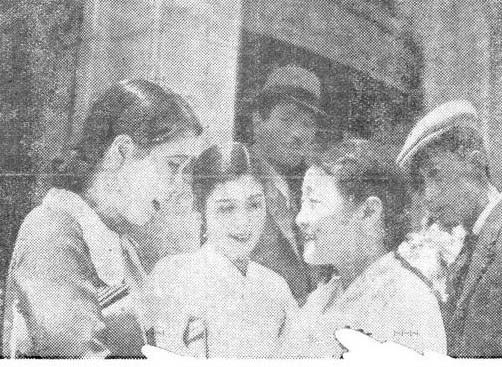
A scene from the 1934 film Crossroads of Youth silent film
Directed by Lee Gyu-seol (이규설) Cinematography by Lee Myeong-woo
Supervision, Script and Editing by Jong-Hwa Ahn (안정화)
Production Company - Geumgang Cinema (금강키네마)
Opening Date - September 21, 1934 at the Chosun Theatre (조선극장)
Movie Duration - 73 - 80 Minutes
Nation - Japanese colonial period Joseon during the Japanese colonial period.
Language - Silent Film/ Korean Commentary
Cast:
Lee Won-yong (이원용) – played Yeong-bok (영복)
Shin Il-seon (신일선) – played Yeong-ok (영옥)
Park Yeon (박연) – played Jang Gae-cheol (장개철)
Kim Yeon-sil (김연실) – played Young-hee (영희) (Some say it is Gye-sun, not Yeong-hee)
Yang cheol (양철) – played Ju Myeong-gu (주명구)
Moon Kyung-shim (문경심) – played Bong-seon (봉선)
Lee Bog bon (이복본) – played Baggage Carrier Friend (수화물 운반부 친구)
Choi Myung-hwa (최명화) – played Baggage Carrier Friend (수화물 운반부 친구)
Plot
The film opens with the sight of a train passing, setting the stage for Young-bok's journey. Having left his mother and younger sister, Young-ok, in their hometown, he arrives in Seoul to work as a porter at Gyeongseong Station. Previously, Young-bok spent seven years as a son-in-law at Bong-seon's household, but he relocated to the city after Bong-seon was taken by Ju Myeong-gu. In his new role, he encounters Young-hee, a gas station attendant who struggles to support her ailing father and younger sibling.
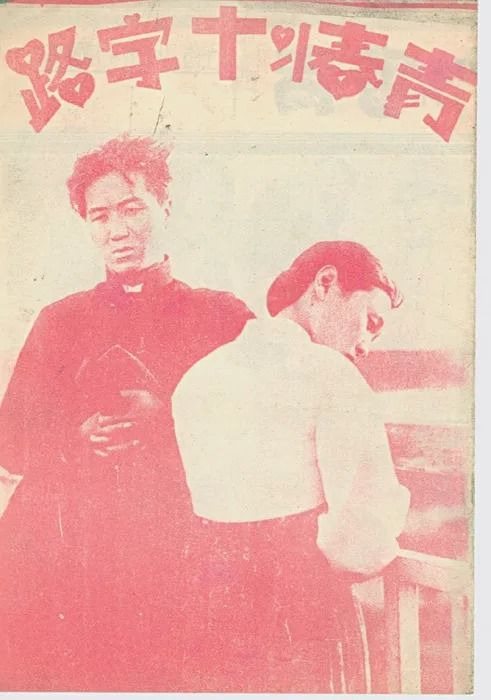
In the meantime, Young-ok, having lost her mother, travels to Gyeongseong in search of her brother. Unable to locate him, she secures a position as a waitress at a café. During her employment, she meets Gae-cheol, a wealthy associate of Ju Myeong-gu, who exploits her vulnerability, leading to a traumatic encounter. Concurrently, Young-hee, who has also lost her job, becomes ensnared in Gae-cheol's predatory circle.
After fleeing her home, Young-hee confides in Young-bok about the harrowing events. Upon learning the truth, Young-bok confronts Gae-cheol at his residence, where he reunites with Young-ok. She recounts her ordeal, prompting Young-bok to seek vengeance against Gae-cheol. In a climactic confrontation, he and his fellow porters launch an attack on Gae-cheol and Ju Myeong-gu's gang. Ultimately, with the conflict resolved, Young-bok receives Young-ok's blessing and vows to start anew alongside Young-hee.
Production
"Crossroads of Youth" marked the inaugural production of Geumgang Cinema, a film production entity. Initially conceived as a sound film, the decision was made to transition to a silent format due to certain deficiencies identified in the original footage. Producer Park Chang-soo, who adopted the stage name Park Yeon for his role as Jang Gae-cheol, financed the project himself after experiencing setbacks in his acting career, including an unsuccessful audition for actor recruitment.
The filming took place across various locations in Gyeongseong. The narrative commences at Gyeongseong Station, where the character Yeongbok serves as a porter, while scenes featuring Yeonghee as a gas station employee were captured in the vicinity of Gyeongseong Station Square. Additionally, a pivotal fight sequence between the characters Banbu and Gookilgwan was filmed in one of Seoul's numerous restaurants.
Screening
"Crossroads of Youth" premiered at the Joseon Theatre on April 21, 1934. On September 26 of the same year, an incident occurred involving an actor from the film who was stabbed. Um Dong-ok (엄동옥; 嚴東鈺), a boxer and gangster known as Shinmajeok, confronted Lee Won-yong and Park Yeon after viewing the film. During this encounter, Um Dong-ok requested a drink, citing the movie's commercial success, and subsequently demanded payment for his suit. When Lee Won-yong refused to comply, Um Dong-ok attacked him with a dagger. The weapon penetrated Lee Won-yong's left abdomen, cutting through his suit jacket and pants, yet fortunately did not injure his flesh.
Excavation and Re-examination
Following the discovery of "Sweet Dream" in 1936, a private collector reached out to the Korean Film Archive, claiming possession of nine rolls of vintage film. The collector explained that his father had operated a cinema named Dansungsa until shortly after the Korean War began, and the films were preserved when the theater ceased operations during the conflict. Upon examination by the Korean Film Archive, it was confirmed that these rolls contained the original negative of "Crossroads of Youth," which premiered in 1934. Notably, the discovered material was a negative rather than a positive print, consisting of nitrate film, with eight rolls representing the main content and one roll dedicated to the ending credits. Regrettably, one of the eight main rolls exhibited a whitening effect, rendering it irreparable.
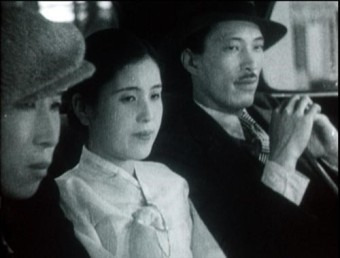
The discovery of this film marked it as the oldest surviving Korean cinematic work, leading to occasional screenings organized by local authorities and film archives. Given its silent film status, many of these screenings featured a narrator to provide context and commentary. In 2007, the Korean Film Archive was approached by another private collector who provided nine nitrate negative rolls from the 1930s. Among these, one roll included the film's concluding titles, while another was too deteriorated to undergo restoration. The collector's father had retained these films from his time managing Dansungsa until the onset of the Korean War.
During the restoration efforts, the film research team initially identified the work as "Passion Flowing Through the Galaxy," directed by Ahn Jong-hwa. However, further investigation clarified that the film was indeed "Crossroads of Youth." This process underscores the challenges associated with preserving nitrate film, which is susceptible to oxidation and poses significant fire hazards, as evidenced by historical incidents even in well-organized archival environments like the United States. The fortunate survival of these films, despite their precarious conditions, is a remarkable achievement in film preservation.
Evaluation
In 1938, the Chosun Ilbo Film Festival recognized "Crossroads of Youth" as the sixth best entry in its list of the "Top 10 Silent Films."
Show
At the time of its debut, "Crossroads of Youth" achieved significant commercial success. Baek Ya-saeng, in his article "15 Years of Joseon Cinema" published in the Chosun Ilbo, remarked that "Mr. Ahn Jong-hwa produced ‘Crossroads of Youth,’ and the audience, eager for Joseon cinema, responded with applause reminiscent of raindrops at a festival." He further noted that during its screening in Daejeon on Chuseok in 1937, three years post-release, the venue was filled to capacity.
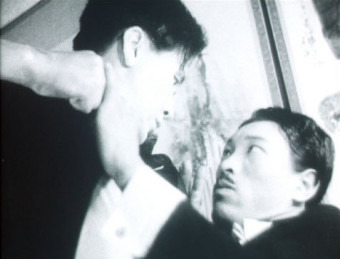
Director Ahn Jong-hwa later reflected on the film's box office performance, attributing its success partly to the return of actors Lee Won-yong and Shin Il-sun to the screen after a lengthy absence, which provided the film with a competitive edge at the box office.
Impact and Value
“Crossroads of Youth” predates the first sound film, “Chunhyangjeon,” released in 1935, and stands as the sole silent film produced during the Japanese colonial era. Its historical significance is underscored by its designation as National Registered Cultural Property No. 488 in South Korea, reflecting its cultural and artistic value.
Film historian Kim Jong-won highlights several aspects of “Crossroads of Youth” that contribute to its importance in Korean cinema. It provides insight into the state of filmmaking at the conclusion of the silent film era under Japanese rule, showcases the talents of early silent film actors like Shin Il-sun, Lee Won-yong, and Kim Yeon-sil, and offers a glimpse into the early works of Ahn Jong-hwa, whose contributions remain largely unexamined due to the loss of his films. Notably, the film's discovery occurred within South Korea, further enhancing its cultural relevance.
youtube
Anseong Art Hall to hold performance of historical drama 'Crossroads of Youth'
Anseong Art Hall in Anseong City set to showcase the historical drama 'Crossroads of Youth' at 7:30 PM on July 28, 2021, in the Small Theatre. This event was part of the hall's programming for Culture Day in July and represents a reinterpretation of the 1934 Korean silent film 'Crossroads of Youth' by Jong-hwa Ahn, presented in a new format known as bensa drama. The performance aimed to evoke the atmosphere of the Gyeongseong theatre district during the 1930s, as articulated through the bensa's dialogue in the original film.
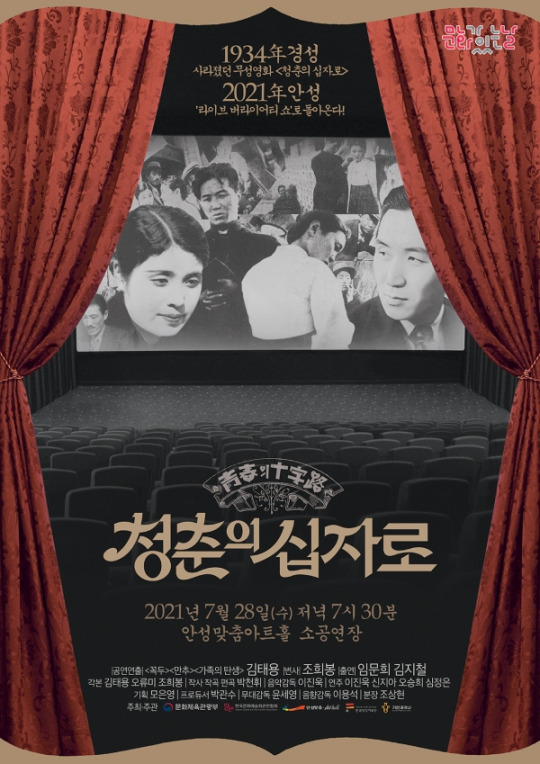
Anseong Art Hall in Anseong City will present the historical drama 'Crossroads of Youth' at 7:30 PM on the 28th as part of the July Culture Day planned performance at the Anseong Art Hall Small Theater. (Photo = Anseong City).
The significance of 'Crossroads of Youth' lies not only in its status as a landmark Korean film but also in its aesthetic and historical value. The film has garnered acclaim for its visual artistry and has been featured in prestigious film festivals, including the Seoul Chungmuro International Film Festival and the Busan International Film Festival in 2008, as well as international events such as the 47th New York Film Festival in 2009 and the Guanajuato International Film Festival in 2011. These accolades have played a crucial role in promoting the global recognition of Korean cinema and its performances.
This production is under the direction of Kim Tae-yong, known for his work on "The Birth of a Family" and "Manchu." Jo Hee-bong, recognized for his roles in "Chuno" and "My Love from the Star," served as the narrator, showcasing his abilities and artistry throughout the performance.
The silent film play "Crossroads of Youth" creatively fills the voids of silent cinema with a blend of humour and wit. Tickets were available for 5,000 won with a 'Culture Day Discount,' and Anseong Art Hall implemented safety measures by limiting attendance to 143 seats, which was under 50% of the venue's small theatre capacity, to mitigate the risk of COVID-19 transmission.
#south korea#korea#The Crossroads of Youth#청춘의 십자로#靑春의 十字路#20s#30s#melodrama#history#youtube#Youtube
2 notes
·
View notes
Text
Chunhyang: I’ve been wondering this for a while, but—what is that thing? Why would a steamed manjuu bun speak? Mokona: Mokona is Mokona! Fai: Just think of Mokona as a mascot, or maybe an idol. Mokona: Mokona’s an idol!
#Chunhyang#Mokona#Fai#Tsubasa Chronicle#Tsubasa Reservoir Chronicle#Quote#Chunhyang and Mokona#Goryeo#Fai and Mokona#Chunhyang and Fai
3 notes
·
View notes
Text

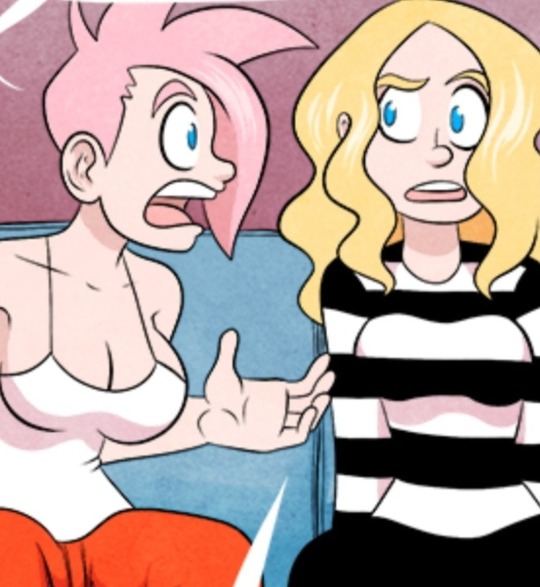
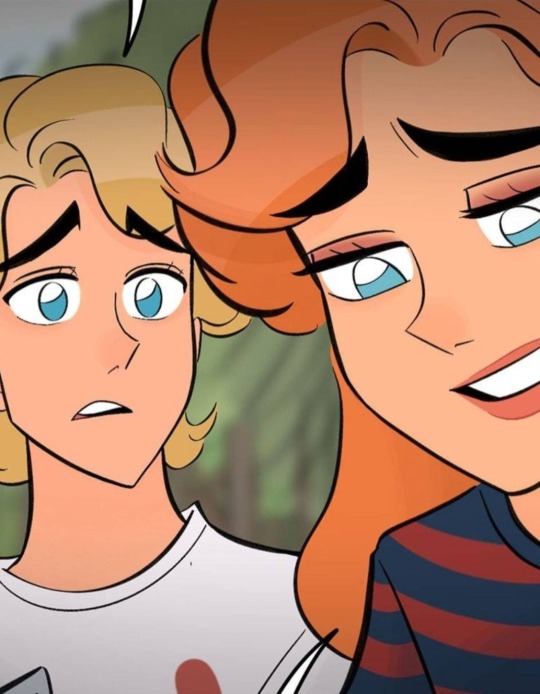
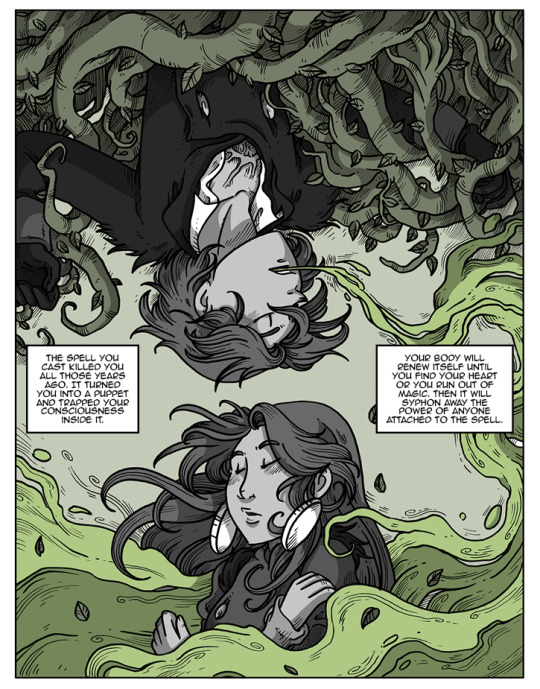
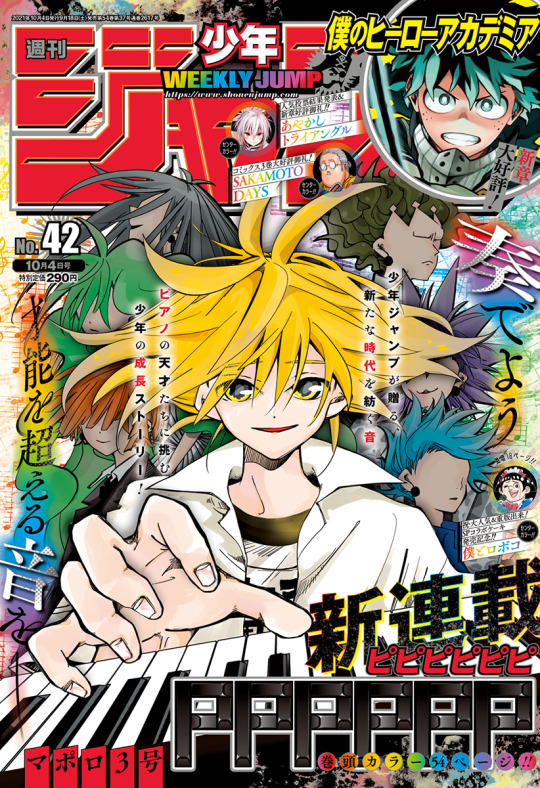
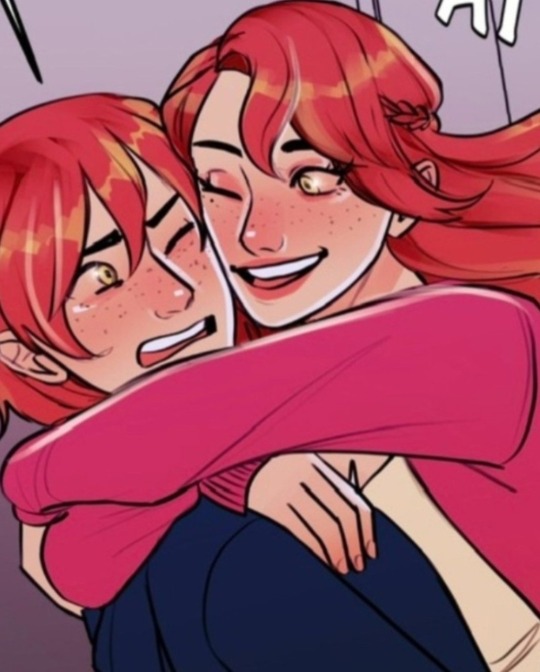
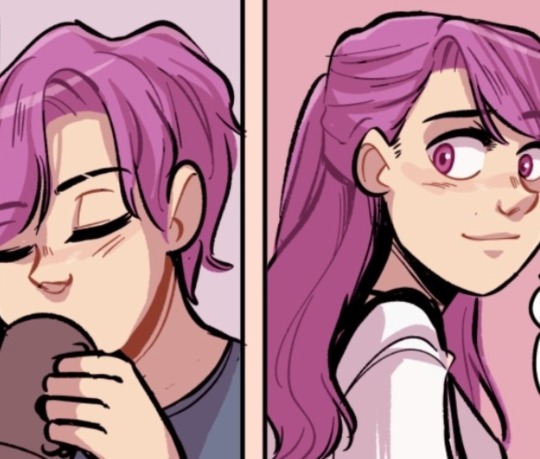

Brenda and David, Selva and Warwick, Chunhyang and Mong-Ryong and the PPPPPP septuplets are qualified for the bracket !
#multibirth tournament#tournament polls#prelims#indie webcomic#web comic#webcomics#webtoon#webcomic#tapas webcomic#comicblr#indie comics#deor#ennui go#jackson's diary#namesake#pppppp#star children#the kaines project#villain with a crush
12 notes
·
View notes
Photo

Korea: Kisaeng entertainer and courtesan, c. 1900
Kisaeng (also spelled gisaeng), sometimes called ginyeo (기녀), refers to female Korean entertainers similar to the Japanese geisha and the ancient Greek hetaerae. Kisaeng were not prostitutes but, rather, artists. Although many casual observers mistook kisaeng as prostitutes in Korea, kisaeng entertained aristocracy or royalty, such as the yangbans and kings, as artists.
First appearing in the Goryeo Dynasty, kisaeng served in the government as entertainers, required to fill a variety of roles. In addition to entertainment, those roles included medical care and needlework. Many worked in the royal court, but they also served throughout the country. They received careful training, frequently achieving accomplished in the fine arts, poetry, and prose, although nobility often ignored their talents due to their inferior social status.
Kisaeng, both historic and fictional, play an important role in Korean conceptions of the traditional culture of the Joseon Dynasty. Some of Korea's oldest and most popular stories, such as the tale of Chunhyang, feature kisaeng as heroines. Although the names of most real kisaeng have been forgotten, history records a few for outstanding attributes, such as talent or loyalty. Kisaeng Hwang Jin-i represents the most famous.
continue reading...
39 notes
·
View notes
Text


The new governor of Namwon district. A prodigy. The youngest ever to pass the civil service examination with the highest marks, but becomes a corrupted official. As a side effect of taking medicine as a child, her hair turned gold as she become older. She is trying to win the heart of Chunhyang. She hasn't seen much success.
Chunhyangjeon
20 notes
·
View notes
Text
The Great CLAMP Re-Read Part 10: Magic Knight Rayearth
Part 1 (RG Veda) | Part 2 (Man of Many Faces) | Part 3 (Tokyo Babylon) | Part 4 (Duklyon) | Part 5 (Clamp Detectives)| Part 6 (Shirahime)| Part 7 (X)| Part 8 (Chunhyang)|Part 9 (Miyuki-chan)| Part 11 (The One I Love)
In 1991, Sailor Moon was launched in the magazine Nakayoshi, aimed at younger girls. It kicked off an era of fantasy and magical girl-oriented manga, and CLAMP were scouted to publish their own in Nakayoshi. Rayearth is very dear to me as my very first CLAMP story, as the anime aired in my country in my kindergarten years. Released in two parts, Part 1 ran from 1993 to 1995 in 3 volumes, followed by Part 2 from 1995 to 1996, again in 3 volumes. It spawned a two season anime, an OVA, multiple video games, a forthcoming new anime, and countless merch. I purchased the 25th anniversary release, a lovely hardcover version that allowed me to appreciate and reflect on a childhood love as an adult.
I've discussed how X ended CLAMP's 90s run, both in art style and thematic content, but I do think Magic Knight Rayearth was the beginning of that end. The mega-hit cemented their rising star, and proved that CLAMP's favourite themes could be meaningfully applied to a younger audience they'd never reached before. While Rayearth does not entirely stick the landing, it cannot be overstated its impact on the magical girl genre as it deconstructs and reconstructs ideas of girlish purity, innocence, and power systems in a thematically brilliant combination of philosophy, fantasy, and video game tropes. Some imagery from Rayearth has remained with me forever, a testament to its emotional impact. Heavy spoilers!
Synopsis: Three colour-coded Tokyo middle schoolers are summoned to the world of Cefiro, where the strength of your heart's will can shape yourself and the world. Princess Emeraude is Cefiro's Pillar, spending all her days praying for Cefiro's peace. But the priest Zagato has kidnapped Emeraude, and Cefiro is crumbling. The trio, revealed to be the Magic Knights of legend, must journey and level-up, video-game style, to unlock the mashin and save Cefiro. But all is not as it seems about Emeraude's kidnapping - and should the happiness of a world rely on the prayers of one single girl? Who will pray for that girl's happiness? Can such a world be truly beautiful?
The Story: Initially, Magic Knight Rayearth feels charming but a bit rote - especially in 2024, with a glut of bad isekai out there. Cefiro isn't a terribly fully-realised world and we never meet its ordinary citizens - though the pace means we don't really notice. Hikaru and Emeraude embody the classic pure-hearted shojo, who valiantly fight against the evil adult sexuality the likes of Alcyone and Zagato. Yet, the rote nature of the girls' fantasy video-game quest is precisely part of Part 1's entire deception: Princess Emeraude is not a child, but an adult woman trapped in the confines of the Pillar System that demands she remain a sexless little girl and pray for the happiness of others, instead of her own. The Magic Knights exist to kill the Pillar, following their pre-scripted roles to the one of the most haunting moments in manga where they have no choice but to kill Emeraude.
Its such a brilliant deconstruction of magical girl tropes that usually valorize girlish innocence, where everything can be overcome by the purity of one's heart, and fantasy RPGs, of a perfect princess and an evil dragon. The Magic Knights never consider Emeraude's humanity or free will, only her relation to her society, playing the video game only to realise the entire system is broken and at its heart, Omelas-style, lies a suffering child. Its bone-chilling as the girls celebrate that they've saved Cefiro by killing Zagato, unaware Emeraude is losing her mind. Its not to say Part 1 doesn't have some structural narrative issues: its pacing, while relentless (I could not stop reading Vol 3 in particular) can feel uneven (the Forest drags, while Ascot's turn is too fast and cheesy), the prat falls get tedious as an adult reader, and its meta-narrative of formula to critique formula is better understood on second readings. Still, I loved so much of what Part 1 ambitiously tries to do on a thematic and structural level and it is a gripping read.
Part 2, CLAMP admits, was written very quickly because it was not expected to happen - and personally, I think Part 1 is much stronger than Part 2. Part 2 tries to meaningfully address the trauma the girls have experienced ("the weapons I made became instruments for your suffering" from Presea was one I had to write down), but it does gloss over the culpability and tragedy of Part 1 - I hated that Emeraude was happy in death to placate the girls. A lot of stuff feels retconned in, and the lack of driving narrative means the story treads water in unnecessarily long bits with Fahren and Chizeta and the Magic Knights are mostly reactive. I also cannot take god Mokona seriously.
Still, I enjoyed Part 2 for the strong arcs of characters like Eagle, Hikaru, and Umi, and the conversations about whether a world built on the suffering of another can really be beautiful. Despite how silly god Mokona is, I do think the ending is a fantastic answer to Part 1: the only way to save Cefiro is to break the entire system and rebuild it again where everyone must, together, make society worth living in. Hikaru becomes the new Pillar not because of her purity - indeed that self-sacrificing Christ-like behaviour is what gets Emeraude in trouble in the first place - but because of her earthly refusal to accept anyone else sacrificing themselves for others AND her belief that we have to trust and try to make society better. It's a very mature look at empathy and compassion and individual vs. collective happiness, handled for children to understand, and its lush, badass, and emotional to watch Hikaru save Eagle in the process. Yes, its cheesy and sloppily paced (it is for 12 year olds and I do have to remind myself of that), but damn if it didn't move me. As I keep saying, CLAMP has never written a character I've loathed!
Despite its inconsistent quality, I do think it is good to read both Parts 1 and 2 for how they overall deconstruct and reconstruct magical girl manga in a way that moves away from rote roles of purity and self-sacrifice that bog down the genre, in a story that is overall fun and deeply emotional.
The Themes: I can absolutely see how Rayearth was written concurrently with X (Mokona tossing aside Earth for its corruption). But these same themes of what makes life, and the world, worth living, are taken in fascinating new ways. Here, CLAMP's favourite concept of "destiny vs. free will" explores destiny not as a divine system but a societal enforced structure. Emeraude believes she's fated to only pray and thus her loving Zagato destroys everything, but this is the result of her accepting that the system is infallible and unchangeable. She is the Christ-figure maiden trapped in the world tree to support it, but who needs redemption not from the divine Eagle, but the earthly Hikaru, who teaches self-love. Nobody in Cefiro (or beyond) can conceptualize a Pillar-less world. The people of Cefiro accept the game's logic and play it, but - as CLAMP loves to remind - we are individuals and our choices have meaning and power.
And this leads to a really interesting theme of whether peace bought too dearly is even worth it - is collective happiness more important than individual happiness? Happiness, CLAMP does remind us, is different for every person, but comes out on the side that individual suffering suffuses the whole system. Self-sacrifice - like in X! - does nothing but lead to suffering from the people who love you and holds no glory. And who can't love a story that tells little children that we have to find a way to live that allows us all to be happy?
There's also a really interesting gender dynamic that I rarely see discussed by fans that I find fascinating. Shojo is infused with pure-hearted innocent heroines who face off against "phallic mothers", that is, adult women who embody sexuality and power in contrast to acceptable female roles (there's a lot of very interesting discussion on whether shojo is actually feminist that I feel bypasses Western audiences). At first, Rayearth seems to follow these tropes - the girls and Emeraude are shojos, while characters like Alcyone (a sexually mature woman who is characterized as evil for loving Zagato when he doesn't love her) are phallic mothers.
Yet the finale twists this - Emeraude is another phallic mother whose "selfish" love for Zagato has transformed her into an adult woman that must be killed. And killed she is, as shojo tropes demand, but no happy ending comes. Emeraude was not selfish, but human, and failed by a system that demanded this of her. Part 2 never lives up to the potential set up by Part 1 - Hikaru remains a shojo who can't recognize Lantis is confessing to her - but it was something I really enjoyed chewing over in Part 1.
The Characters: While the girls might seem typical at the start, CLAMP has a real charm for making cliche work for them. Fuu is much quirkier than the shy meganekko trope, and Umi. Umi was the stand-out for me as the most dynamic of the bunch, with such a wonderful character arc across all 6 volumes from bratty rich girl to compassionate, brave warrior. It is she who recognizes the world isn't beautiful and her own naivete, she who finds inspiration from her friends to like herself more, she who grows up! The supporting cast is equally charming, and I loved the tragedy of Emeraude and Zagato.
While Lantis is a fine Yasha-style giant guy, I really adored Eagle by the end and his relation to Hikaru and Emeraude. Hikaru is s a highly static character, but her deep self-love and determination are impossible not to love. There's something just so compelling about his mirror of Emeraude and especially Hikaru, who frees them both by absolving them of their self-denying divinity. Their entire arc is a beautiful reaffirmation that we are humans who deserve to live and find meaning in that. I would say the character I cared for the least was probably Ferio, who never shows either comedic charm (Caldina, Ascot) or inner depth. But he appears so minimally that I can wave aside that he's a boring, paper-thin love interest.
The Art: I'm in two minds when it comes to Rayearth. There are some truly stunning moments in the artwork and visual motifs. The very idea of making an Art Nouveau magical girls in a fantasy RPG world led to so many incredible creative design choices (though Hikaru's skirt in her final armour bothers me. Metal and fabric don't fall like that). The silent two page spread where the girls murder Emeraude will likely haunt me for the rest of my life. Emeraude's hair pearls transforming into her crystallized tears is such a brilliant twist on the established visual motif. There's a lot of highly inventive panelwork that lushly moves between the real world and contemplative spaces.
On the other hand, because Cefiro is not the real world, CLAMP could not use their trick of scanned photo backgrounds. The result is a distinctive lack of backgrounds that were especially frustrating because I felt like I had no idea what these fantasy spaces look like - and RG Veda never had this problem! There's one particular hand-drawn Tokyo background that looks horrendous in how sketchy it is. Rayearth definitely reflects CLAMP's burnout period in that there are definitely more corners cut, like with the constant chibi scenes (very classically 90s, but not something I've ever enjoyed) and heavy use of screentone to mask lack of background. It's still visually stunning, but it's definitely not their drawing peak. Would I still frame some of these pages? Absolutely.
Questionable Elements: Presea makes an off-colour Native American joke. The designs of the Chizeta and Fahren characters lean heavily into cultural stereotyping of the "Orient" - they at least are real characters in the story, but they really irritated me for quite a long time in the story because of how glaring this is. Especially when Aska says white-ish, blue eyed blonde Emeraude is a "true princess". It makes the epilogue's (very good) moral of "we were all made different so we can learn from one another" fall a bit flat if CLAMP themselves made no effort to actually learn from people unlike them.
Overall: While Part 2 of Rayearth never quite lives up to the potential set by Part 1, the entire series overall is such a refreshing take on the magical girl genre, even 30 years on. Its meta-narrative and postmodern reflections on the genre and its blend of magical girl tropes, philosophy, fantasy and JRPGs, and unique and timeless visual influences has led to a series that has withstood the test of time - and many of its peers that similarly attempted to be the "next Sailor Moon". I think, unlike them, Magic Knight Rayearth has such a strong CLAMP fingerprint upon it - it is their humanist and occult-flavoured take upon the genre, and for that it affirms the value of individual human life, each one, and our choices, in being necessary to create a society that will last, not divine action.
It is a story about stories, making it fascinatingly ahead of the curve. And while its child audience means that it lacks subtlety and nuance in many ways (and frankly Nanase Ohkawa has the subtlety of a brick in her writing in general), I can't deny how much it has remained with me all these years and I find something new to love in it each time. It warrants being one of CLAMP's hits for these reasons, by taking apart the genre set up by Sailor Moon to say it is not pure-hearted divine princesses who will save the world, but our selfish human love that will fight off entropy, every time.
9 notes
·
View notes
Text

Who are MRK and CHK?
Overactive fiery red head with fire powers and her overworked twin brother who has to keep putting her fires off. They're like 14 and should NOT be police officers
Who are Moss and Tangle?
inner children version kinda of the two main characters
2 notes
·
View notes
Text
Two eps in, Love Your Enemy is fine but it confirms to me that romcom is so very much not my genre.
All the romcom dramas I’ve ever loved turned into another genre eventually - melodrama or slice of life or w/e. I think that is why I used to love 00s kdrama romcoms - they always went into hardcore angst in the second half; in retrospect I would tolerate the fluffy first half anticipating the melo to come, treating the romcom part as the tolerable appetizer before the proper and excellent meal.
And eventually kdrama romcoms ceased to do that and ended up being “proper” romcoms all the way through and that’s when I lost any interest. I mean, if I only like the genre when it leaves the genre, I am probably not a fan of the genre to begin with. When I think a favorite romcom what comes to mind is Delightful Girl Chunhyang and the second half of it is nonstop angst - I still remember sobbing, destroyed ML or FL having to leave him to protect him from going to jail. Or Capital Scandal which started with a bet that a playboy can seduce an uptight patriot lady and proceeding to horrifying physical torture, mental breakdowns and a dead secondary OTP.
(The last kdrama romcom I loved was HCCC and it’s actually not really a pure romcom at all - it’s a slice of life/character study and its ML is traumatized as fuck. And before that it was Secretary Kim which I only got truly into when we got to kidnapping and horrific trauma. Those are the two most recent ones - and they aren’t recent at all tbh, and the rest are older.)
So here I am watching LYE and it’s well acted and well written but all I want is Jung Yumi in another QSS or JJH back in Mawang.
12 notes
·
View notes